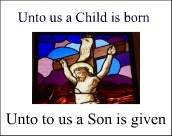Synoptic Gospels and John's Gospel
There are four Gospel accounts. The so called synoptic gospels are the: gospel according to Matthew, gospel according to Mark, gospel according to Luke. The fourth gospel account is attributed to another of Christ's disciples, named John.
The synoptic gospels are so named because of the definition of synoptic.
The American Heritage Dictionary defines synoptic as: "Presenting an account from the same point of view." [1]

Despite being labeled synoptic, these gospels are not necessarily presented from the same point of view.
Let me explain. There were literally hundreds of people observing the 911 disaster. Each observer had a somewhat different perspective of the World Trade Center collapse. The perspective of a person in one of the towers was vastly different than that of a person in a nearby office building.
The perspective of a witness at ground level is different than that of a first responder. All these viewpoints differed one from another, yet each person was viewing the same unfolding event.
If each of the four above witnesses of the tragedy were to present a written account of what they saw, none of the accounts would be exactly the same.
Similarly the four gospel writers recorded their accounts of what Jesus Christ said and did. Yet each gospel is different. So why is the gospel according to Matthew, gospel according to Mark, gospel according to Luke, referred to as synoptic?
It may have something to do with the fact that the gospel of John is markedly different from the other three.
John's gospel is primarily concerned with the Deity of Christ. But the synoptic gospels primarily showcase the humanity of Christ. In this sense the gospels of Matthew, Mark, and Luke are synoptic, or "present the same view".
But the gospels of Matthew, Mark, and Luke are vastly different one from the other.
For example, Luke is the only gentile and a physician. His gospel has detailed descriptions like that of a clinician. Luke's gospel presents Christ as sort of an every man. Luke portrays him as the most human of humans. Luke's intended audience would seem to be all non-Jews all over the world.
Matthew, a Jew, was a tax collector for the Roman government. As such he was a very unpopular man among the Jews who were under the heel of a tough Roman occupation. Matthew's gospel presents Christ as the long awaited, anticipated, prophesied King who would restore the Kingdom of David. The word "Kingdom" is mentioned 57 times in the gospel of Matthew. Matthew's intended audience would seem to be the Jewish disapora.
Mark, whose sir name is John Mark was a protégé of Peter, and was likely a Jew. Mark's gospel is punctuated with short, choppy sentences. The word "immediately" occurs 27 times. The word "servant" appears 5 times. Marks intended audience would seem to be the Romans.
J. Vernon McGee compares Ancient Romans to modern day Americans in attitude and temperament. Thus Jesus is presented as a servant of His Father, God; and decisive man of action to an action oriented people.
So the gospels of Matthew, Mark, and John, are synoptic in that all present the humanity of Christ. But the vantage point from which each sees and describes the humanity of Christ is vastly different.
[1] William Morris et. al., "The American Heritage Dictionary," Houghton Mifflin Company, 1982.




